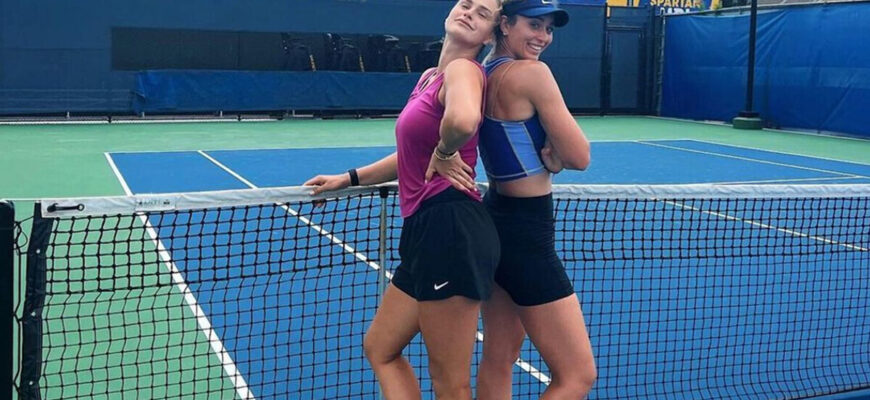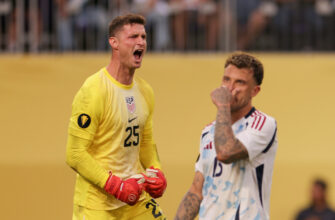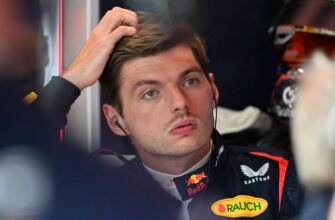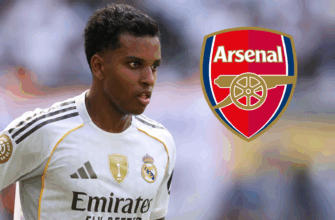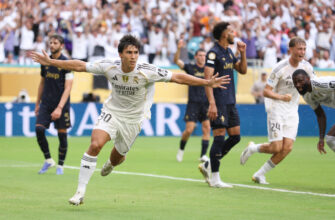MADRID — In Madrid, Aryna Sabalenka`s powerful game has undeniably been evolving with added variety. This diversification is a key factor in her rise to the No. 1 spot in the PIF WTA Rankings.
These subtle yet increasingly significant additions, especially more frequent net approaches and drop shots, will be evident on Friday at the Mutua Madrid Open during her second-round match against qualifier Anna Blinkova.
“I think maybe on clay it’s a bit easier because the game overall is a bit slower,” Sabalenka said Wednesday in her pre-tournament press conference. “You have extra time.”
However, a conflicting idea came to mind.
She added, laughing, “I don’t know, at the same time it’s easier and harder because I have more time and I have more options in my head, and sometimes I get confused.”
Despite her clear current dominance as the Hologic WTA Tour`s top player, leading the rankings significantly and the Race to the WTA Finals, Sabalenka admits she`s still learning how to integrate variety into a game previously based almost entirely on raw power and strength.
Sabalenka views this as a learning process, stating, “It’s a learning process and I’m not afraid to make mistakes. I think with time I will learn how to make the right decisions. It’s going to benefit my game. I think on the clay court, it’s like a good practice with those shots.”
“You just have to make sure you pick the right one at the right moment.”
Moving forward
Last fall at the WTA Finals in Riyadh, her coach, Anton Dubrov, discussed their search for new elements in her game.
He stated, “We’re trying to find somewhere we can be better.”
It’s been an ongoing effort.
Two years prior, double faults significantly hampered Sabalenka`s season. In 2022, she hit a remarkable 428 double faults, the most on the WTA Tour, resulting in a -179 differential (aces minus double faults). The issue was resolved after she added biomechanics expert Gavin MacMillan to her team.
By 2023, she drastically improved, recording 404 aces against 285 double faults for a remarkably improved plus-119 ratio. This improvement coincided with her winning her first Grand Slam in Melbourne and three of the last five hard-court majors.
And now, moving forward, there’s the current initiative: moving forward.
Dubrov has heard all the suggestions and has developed a pretty clever response.
Dubrov noted, “Everyone can say, ‘Oh, yeah, she’s got to finish on the net.’ That’s good advice, like, ‘Don’t do double faults.’ That’s also great advice.”
Far easier said than done.
“It’s got to be at the right time,” Dubrov explained. “What is the structure of the point? Within your mind, you have to finish the point at net.”
This chart, from the start of the clay season, illustrates the trend:

The chart shows a consistent rise in Sabalenka’s net approaches. Upon hearing the 2021-24 statistics, Dubrov smiled and remarked, “That’s a big jump.”
With only 30 matches played in 2025 so far, it’s premature to assess the current season fully. However, in 2024, only three players – Tatjana Maria, Marta Kostyuk and Leylah Fernandez – recorded more successful net approaches. Other players known for consistently moving forward and winning points at the net include Elena Rybakina, Beatriz Haddad Maia, Jasmine Paolini and Coco Gauff.
Variety amplifies power
This increasing tendency to move forward is something Martina Navratilova appreciates.
The 18-time Grand Slam singles champion, who pioneered aggressive net play, has often expressed frustration when powerful players don`t capitalize on their strength by finishing points faster at the net. She has specifically mentioned Iga Swiatek and Sabalenka, the two leading players for over three years.

How important is it that Sabalenka has added this tool to her game?
“It’s huge,” Navratilova emphasized, “because the margins are so small. By not moving forward you’re allowing the other player to get back into the rally. And then you have to start over. You are improving the odds of winning the point by moving forward and hitting the right shot — and, therefore, improving your odds of winning the match. Every little bit helps.”
She added, “Whether you make the shot or not — you’re trying. But moving forward or not, that’s a choice. Sabalenka’s volley has gotten better. She’s got more variety. It’s great to have that much power, but when you add variety to it — that power pays off even more.”
Jessica Pegula, who was defeated by Sabalenka in the Miami Open final, has also observed this.
Pegula commented, “She’s moving a lot better, and I think being a little bit more creative on court. So all of a sudden, it’s not just her power, it’s a lot of these other things that she’s doing better that maybe used to be weaknesses. So I think she’s just all around has stepped up a lot of things.”
Carolina Garcia, another aggressive power player, believes that modern fitness levels enable today’s players to achieve unprecedented court coverage. Garcia noted that the sheer pace of shots from players like herself and Sabalenka often results in shorter returns, creating opportunities to finish points at the net.
Garcia explained, “It’s quite useful to go to the net because you are winning a lot of time on your opponent. And sometimes it’s a little bit easier because the ball will be a little higher to the net, so it’s easier to finish. Rather than when you have to let it bounce — and then the ball goes slowly again and you have to use the power and your risk gets a little bit more.”
She concluded, “So it’s always quite a good way to finish the point.”
Expect to see this strategy even more in the future.
Dubrov stated, “It’s still in process. I would say like 50, 60 percent. It’s not there yet. But if you can add, say five percent [more approaches] every half year, it’s huge.”
No mere drop in the bucket
Following her title win in Wuhan last year, her third consecutive after a four-year hiatus for the tournament, Sabalenka discussed her game’s development.
Sabalenka said, “I improved a lot. I can come to the net and I can finish point and then I can use my touch. I got some variation in my pocket. I just kept telling myself that if you’re not going to be able to hit the ball or slice, hit drop shot, come to the net.”
She emphasized, “I was just reminding myself that I have a lot of weapons, not only hitting the ball.”
Sabalenka mentioned that while she could execute the drop shot in practice, integrating it into actual matches was the challenge. Last year in Rome, during her match against Elina Svitolina, while already struggling with a shoulder injury that later led to her withdrawing from Wimbledon, she used the drop shot out of necessity.
Speaking in Madrid, Sabalenka recalled, “The only option for me was to finish the point as soon as possible. I was like, ‘You know what, I’m going to go for the drop shots.’ I think the best training is training on the match. After that match I was like, ‘Oh, actually it’s working, probably we have to work on that shot more often.’”
She added, “Five years ago if someone will tell me I will finally learn how to do this shot, I’ll be like laughing. I don’t have touch. I’m so bad at it. Now I have this shot in my pocket.”
Surprise is a powerful element in elite sports, especially tennis. A wide serve when a central one is expected, or hitting crosscourt instead of down the line, can be highly effective. Similarly, when Sabalenka’s power forces opponents six or seven feet behind the baseline, she now has an alternative.
Sabalenka remarked, “When I see the opponent is really way far behind, I’m like, ‘OK, I’ll just make them move.’ I’m really happy that finally, finally I learned this shot.”
She concluded, “I kind of have control, which is crazy to say, to be honest. Yeah, that’s just good to have, isn’t it for me? For me, not for my opponent.”

